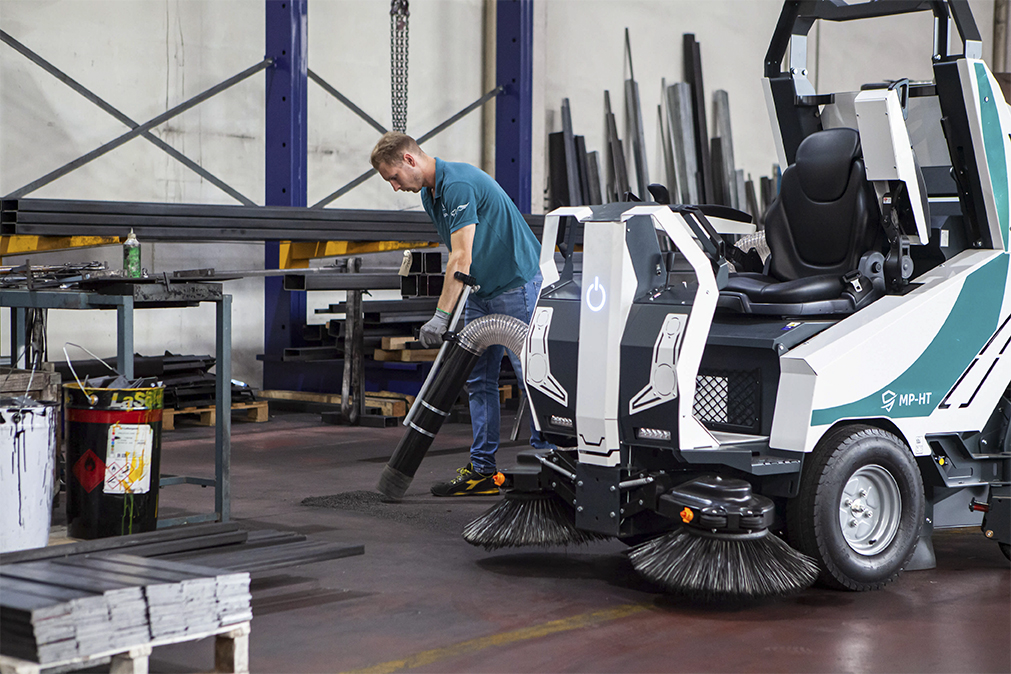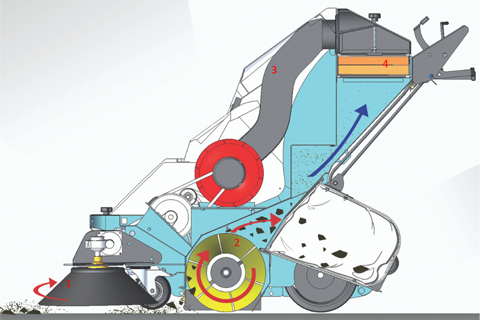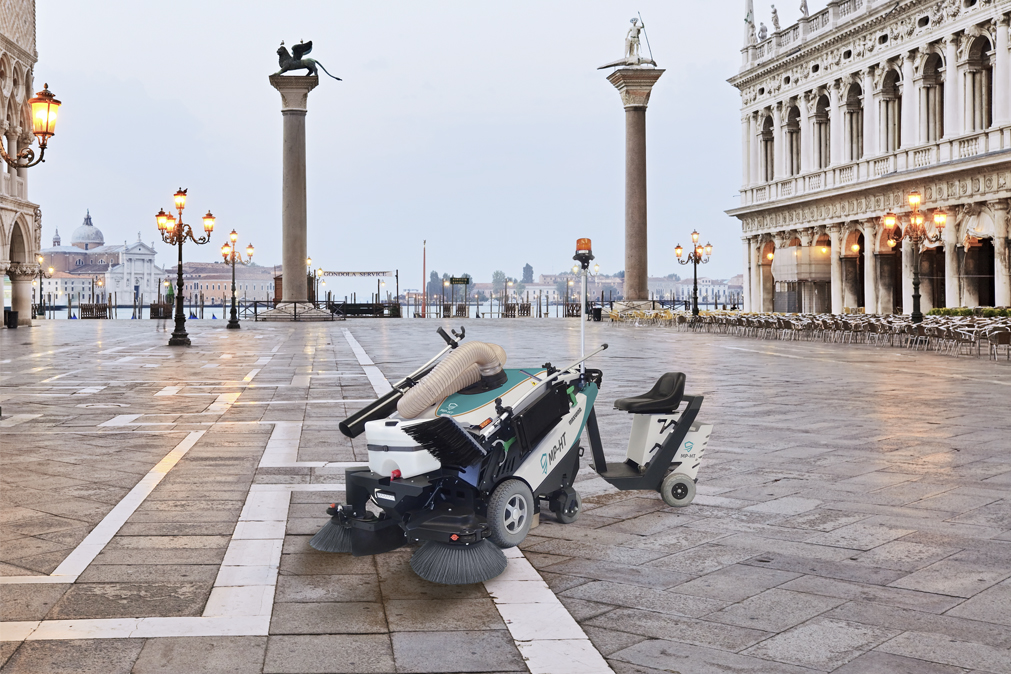
Sweeping machine: features, functions and use
Learn about the features, functions and types of professional sweepers. Read MP-HT's advice for an informed and safe choice.
Read the articleMunicipalities are well aware of it: a clean city is more attractive, pleasant and safer. To ensure a good degree of urban hygiene, in addition to managing the waste cycle, municipal administrations are also called upon to keep streets and squares clean.
The sweeping of public spaces is an activity that developed only during the Industrial Revolution, in the mid-1800s, and can be carried out manually or with the use of motorised machines: street sweepers.
Street sweepers, whose main function is to sweep and collect leaves and/or waste from streets, are essential in preventing potential accidents and inconvenience to the population. Designed to clean large areas, mainly outdoors, unlike those for industrial use, urban sweepers are characterised by:
They must be provided with a license plate and registration certificate and consequently the operator who uses them, in compliance with the Highway Code, must be in possession of a drive license.
Depending on the method used to collect the dirt, street sweepers are mainly divided into two macro categories.
In these sweepers, the side brushes convey the dirt towards the centre of the machine at the mouth of the suction hose. Thanks to the airflow generated by the suction fan, the debris is sucked up and rises towards the hose to end up directly inside the waste container.
In these sweepers, the use of water is necessary, not only to reduce the dust generated by the rotation of the side brushes, but mainly to assist their effectiveness in collecting both solid and liquid waste.

In these sweepers, dirt is collected mechanically by means of side brushes that convey the debris towards the centre of the machine where the central brush throws it, at high speed, directly onto the waste container. The dust is sucked into the container by the vacuum created by the suction fan and is retained by the dust filter.
Unlike suction sweepers, these machines can work dry - the water is used only for the purpose of reducing the dust on the side brushes - and they have the ability to collect even bulky debris.
As in the automotive world, the increasingly widespread environmental awareness has also led manufacturers of cleaning machinery to diversifying their range with different power supply options. Street sweepers can be:
Powered by DIESEL or PETROL, motorised sweepers are still very popular, especially when it comes to large sweepers with waste containers with a capacity of over 1.000 kg. They are chosen because combustion engines guarantee high performance, strength and above all, a long runtime.
Battery-powered electric sweepers are increasingly popular and appreciated, especially by environmentally conscious municipalities.
There are several battery-powered options on the market: from the classic lead-acid battery, to the gel battery to the most recent with LITHIUM-ION.
Nowadays, thanks to continuous technological progress, even electric sweepers are able to achieve excellent performance and ensure good working runtime.
Every city, whether small or large, has specific cleaning problems and needs that depend on a variety of factors. Knowing how to evaluate and choose the most suitable street sweeper makes it become a valuable investment for the whole community in order to guarantee beauty and public safety.
The type of area to be cleaned and its size are the determining factors in choosing the most suitable street sweeper. For cleaning a street, for example, a large ride-on cabin sweeper with a very large container is better suited. On the contrary, for the cleaning of a pedestrian street in the historical centre, a compact, electric and silent sweeper is certainly more effective and suitable for achieving its purpose.
Other elements to be evaluated are:

Always focused on listening to needs and careful to provide answers to the needs of operators and all citizens, MP-HT has created a line of urban sweepers, totally electric with low environmental impact, simple to manage and safe for those who use them.
The compact size of MP-HT street sweepers allows one to sweep and sanitise small and medium-sized environments: historical centres, pedestrian areas, pavements, car parks, parks, sports fields.
The MAX WIND pavement sweeper, a perfect combination of functionality and ease of use, guarantees precise sweeping in spaces that are difficult to navigate by a bulky street sweeper.
The suction hose and the low-pressure washing lance allow one to collect small debris and sanitise the street furniture, while the powerful side scraper brush allows one to remove weeds and pigeon guano along the edges of the streets.
Thanks to the convenient removable trolley, the operator can also use the sweeper in a seated position both while at work and during transfer.